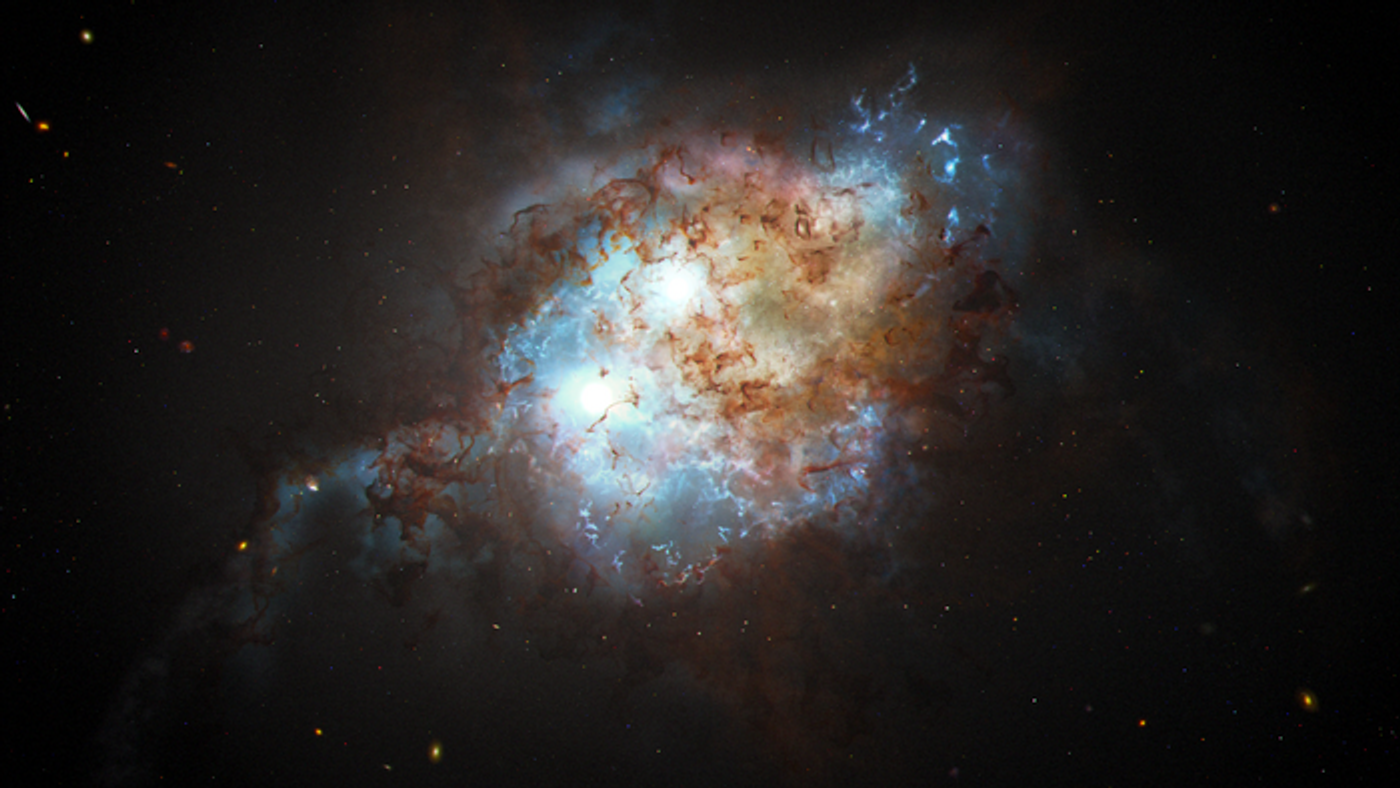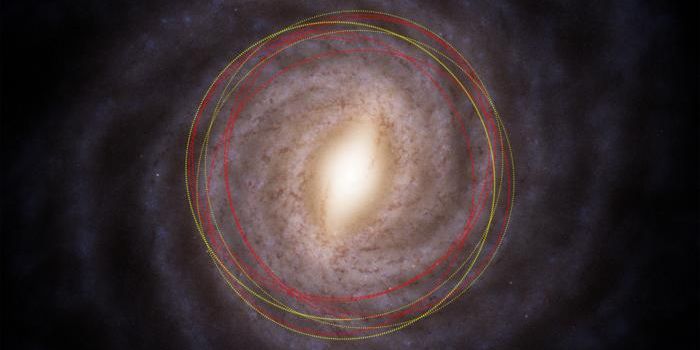NASA Hubble Unforeseen Binary Quasars Observation Reveals More About Supermassive Black Holes
In a recent study published in Nature, a team of researchers have used a combination of NASA’s Hubble Space Telescope and ground-based observations to examine a pair of gravitationally bound quasars that existed when the universe was only 3 billion years old and are blasting out energy inside two merging galaxies. This study holds the potential to help scientists better understand quasars, which are powered by supermassive black holes and feed on dust, gas, and anything else their gravity can get a hold of.
Artist rendition of two quasars residing in the hearts of two merging galaxies. (Credit: NASA, ESA, Joseph Olmsted (STScI))
NASA Hubble image of a binary quasar when the universe was 3 billion years old. (Credit: NASA, ESA, Yu-Ching Chen (UIUC), Hsiang-Chih Hwang (IAS), Nadia Zakamska (JHU), Yue Shen (UIUC))
"We don't see a lot of double quasars at this early time in the universe. And that's why this discovery is so exciting," said Yu-Ching Chen, who is a graduate student at the University of Illinois at Urbana-Champaign, and lead author of this study.
While present-day instruments can observe close binary quasars, the development of this research only occurred about 10 to 15 years ago, making it relatively new, and has determined that pairs of supermassive black holes should exist at the heart of merging galaxies as a result of the merger.
"Knowing about the progenitor population of black holes will eventually tell us about the emergence of supermassive black holes in the early universe, and how frequent those mergers could be," said Chen.
"We're starting to unveil this tip of the iceberg of the early binary quasar population," said Xin Liu of the University of Illinois at Urbana-Champaign. "This is the uniqueness of this study. It is actually telling us that this population exists, and now we have a method to identify double quasars that are separated by less than the size of a single galaxy."
While Hubble has a long-demonstrated ability to observe the heavens, its sharp resolution can’t locate potential double-quasar candidates, which is why the researchers sought the help of the European Space Agency’s Gaia space observatory for this study. In the end, Gaia was able to observe the “jiggle” that double quasars produce, even though the data initially shows the binary object as a single object.
What new discoveries will scientists make about binary quasars and supermassive black holes in the coming years and decades? Only time will tell, and this is why we science!
As always, keep doing science & keep looking up!










